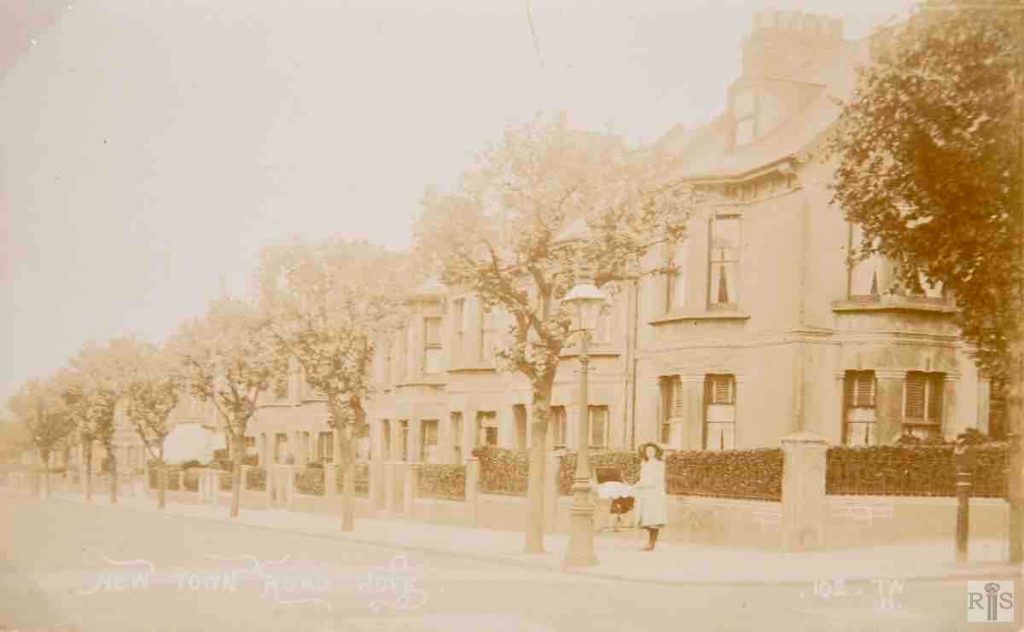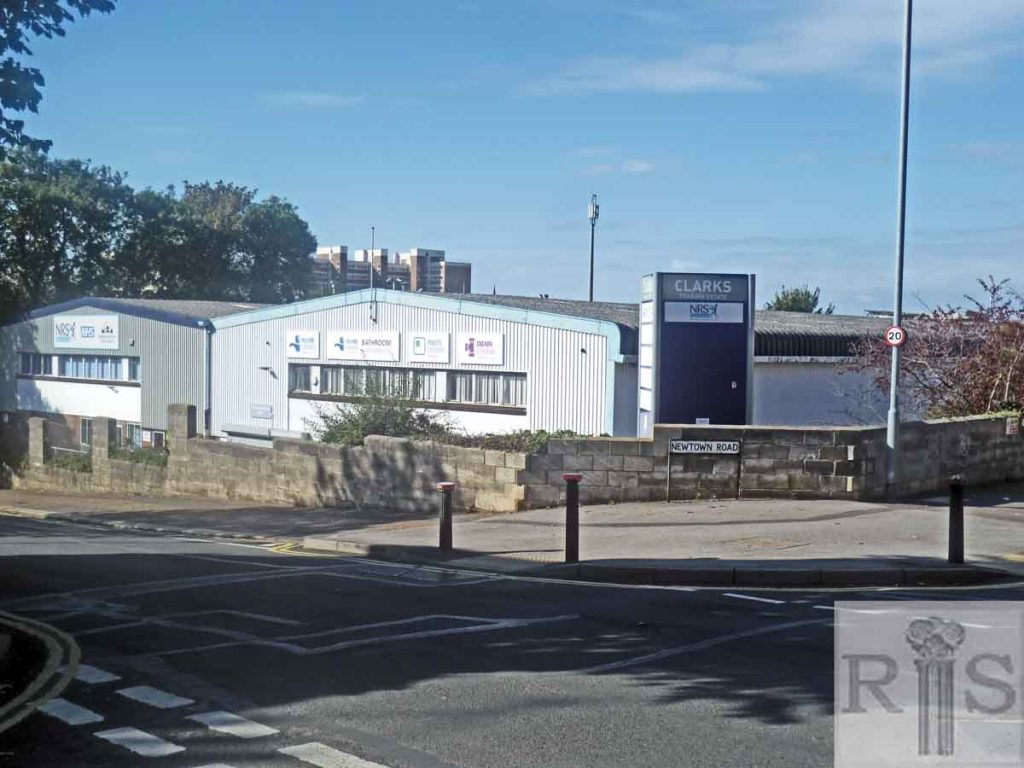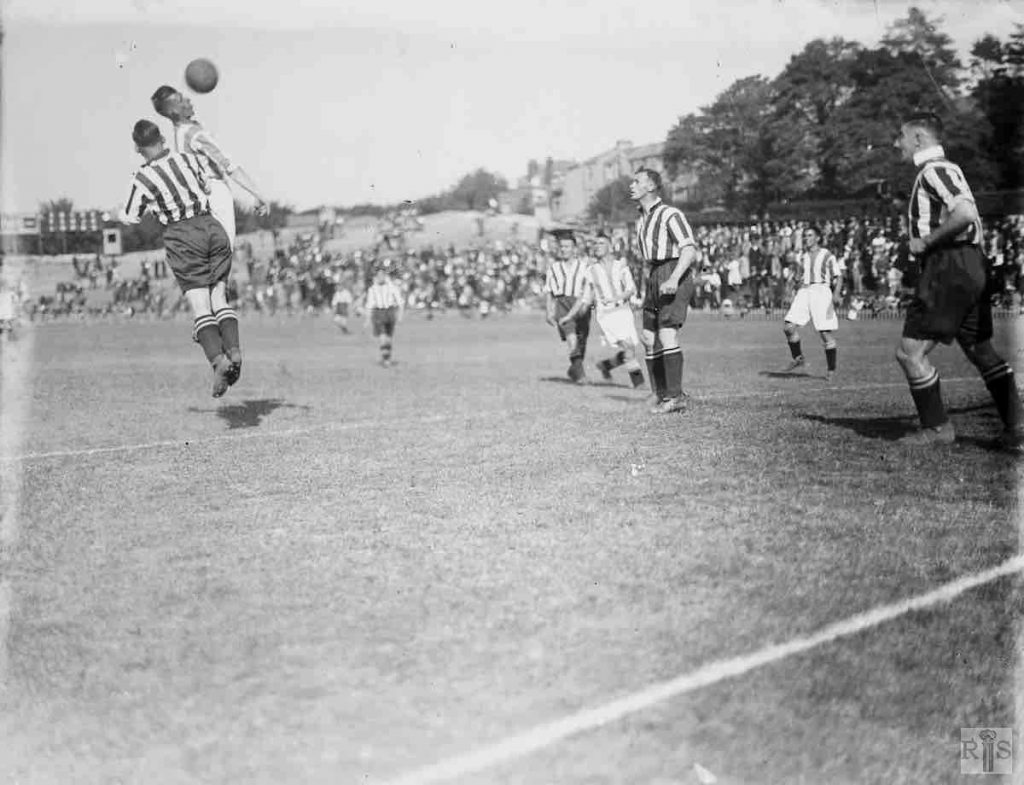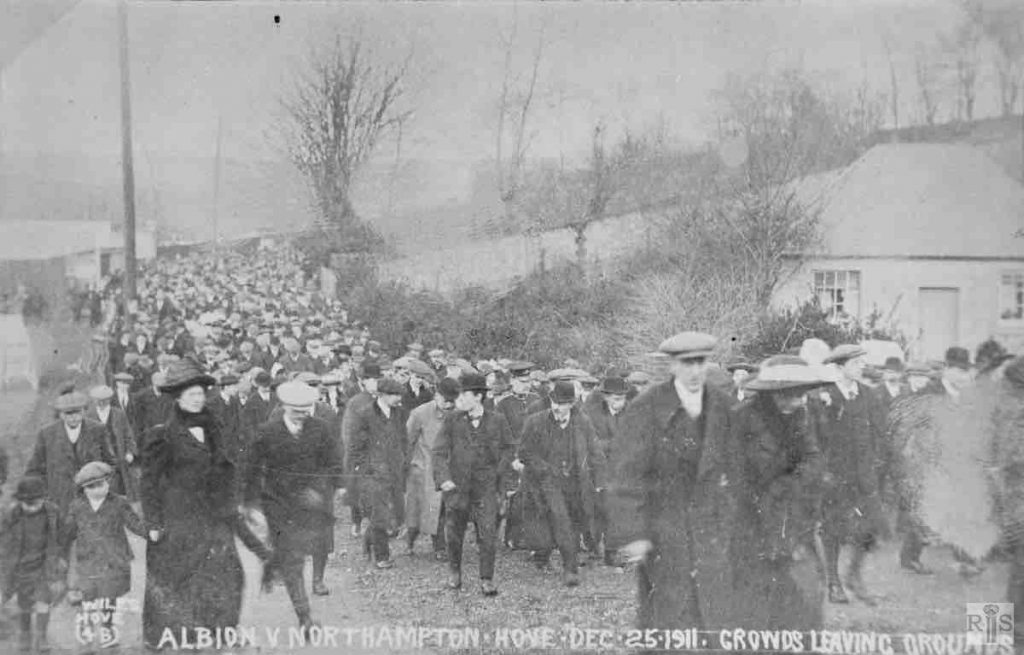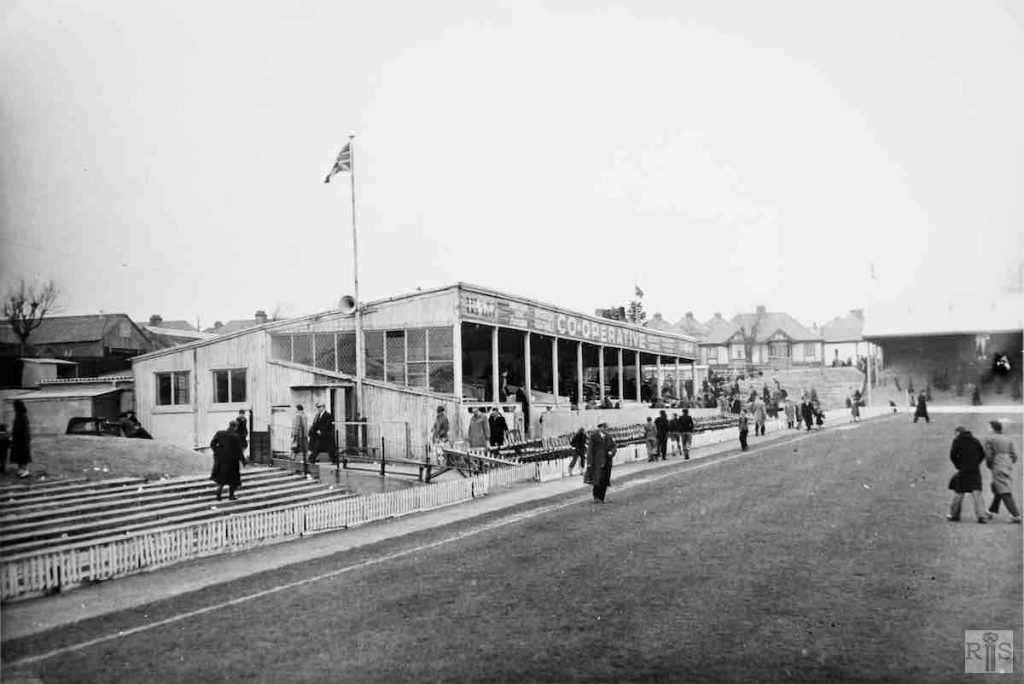
James Gray: The north side of Newtown Road, looking west from the corner of Hove Park Villas. jgc_17_069
2020: Many of these houses are now divided into flats and there are additions such as loft extensions and satellite dishes. Most of the trees in the original image have been replaced by more disease resistant species such as rowan and the pavements on the corners have been widened to help pedestrians cross the road. (Photographer: Jane Cheema)
James Gray: View of the bakery from the north west on the site of the present Newtown Road. Already there had been an extension, the original bakery being only about half this frontage (note the newer, lighter brickwork). On the left can be seen part of one of the three old Goldstone Cottages. Two of these were removed before St Agnes church was built in 1906, while the third cottage is still to be seen in Alderman A J Clark’s garden. jgc_16_079
James Gray: Nearly 90 years after Mr J J Clarke opened his ‘bread factory’ at Goldstone Farm, West Brighton, in June 1887; the end came suddenly for these premises. In October 1976, Clarks of Hove closed down, almost abruptly. The entire range of buildings, which had extended from the original premises a long way along Newtown Road, soon became empty. As soon as it was announced that the buildings were to be demolished I had these photographs taken on November 27, 1977. This view shows the original building. Compare this with the photograph of about 1900 on a previous page. The corner view at the junction of Newtown Road and Fonthill Road. jgc_16_106
2018: All the bakery buildings have gone: now Clark’s Trading Estate. (Photographer: Mark Stephenson)
James Gray: A very fine photograph, taken by Tom Wiles of Hove. The large house with extensive grounds at either side was occupied by Albion’s landlord J J Clark, and that at the right, by his son A J Clark. Goldstone House was demolished in 1955, but the other still remains. Most of the spectators, apart from those adjoining the fence, were standing on what was just an earth bank with only sparse terracing, while a favoured few on this side of the barrier were seated in deckchairs (a bit cold for February).
James Gray: Play in progress, in the Southern League match against unidentified opponents. The season is not known, but it was probably 1912/3 or 1913/4. Note Goldstone House, with its uninterrupted vision of the field of play. jgc_16_085
2018: The Goldstone Retail Park has replaced the football ground. Houses line the east side of Goldstone Lane. (Mark Stephenson)
James Gray: A practice match between Brighton and Hove Albion players in August 1931. No North Stand then, a large unterraced mound, and the trees in the garden of Goldstone House behind the “chicken run”. jgc_16_087
2018: The back of the Goldstone Retail Park that replaced the football ground. (Photographer: Mark Stephenson)
James Gray: Early days at the Goldstone Ground. I have no information as to the date of those football snaps, except that they are prior to 1914. In those days there was no concrete terracing, just an earth bank. Behind the north goal was a deep pond into which drained all the rainwater from the Old Shoreham Road. jgc_16_088
2018: See caption for jgc_16_085. (Mark Stephenson)
James Gray: Early days at the Goldstone Ground. I have no information as to the date of those football snaps, except that they are prior to 1914. In those days there was no concrete terracing, just an earth bank. Behind the north goal was a deep pond into which drained all the rainwater from the Old Shoreham Road. jgc_16_089
2018: The Goldstone Retail Park with fast food outlets and car parking has replaced the football ground. Housing lines the east side of Goldstone Lane. (Photographer: Mark Stephenson)
James Gray: This photograph shows the old farm cottage, while it was still in occupation by one of the farm workers. (It is seen in the last stages of dilapidation on other pages). As can be seen, it stood at the southern end of what is now Goldstone Lane, and was passed by the crowds going to and from the Albion ground. This photograph is dated Christmas Day 1911. jgc_16_092
James Gray: The actual date of the erection of this miserable stand (rabbit hutch it was often called) is unknown, but it seems to have been there in 1905. Photographed in March 1958, and demolished 2 months later. jgc_16_096
2018: The site is now part of the Goldstone Retail Park delivery area. (Photographer: Mark Stephenson)
James Gray: During the inter-war years the ground was often used for events not connected with football, especially during the close season. Here are photographs of two such occasions. This view was taken in October 1934, when a woman’s archery competition was in progress. jgc_16_097
A contrasting photograph, taken in 1930, also looking east. On the pitch were pupils of Hove High School giving a demonstration of physical training. Beyond the scene is dominated by Goldstone house, built in the 1870s and removed in 1955. Note that only part of the east bank was then terraced and behind the boys, the fenced enclosure known as the “chicken run” for which admission charge was 1/6d, instead of the usual price of one shilling. jgc_16_101
James Gray: This building, at the corner of Newtown Road, was erected about 1930, and was in a number of occupations in the succeeding years. Photographed on 21 July 1968, it was later removed for a car wash, which in turn soon gave way to another commercial building. jgc_16_121
James Gray: About 40 years after the farm was given up, two buildings that were closely connected with it still existed. Two views of the large barn and adjoining farm buildings on April 28 and 21 July 1968, respectively. Despite the comparatively small area the site was sold at public auction for £30,700 and doubtless the buildings will soon be removed. jgc_16_104
2018: The present building houses a kitchen showroom. Previously it was an off-licence. (Photographer: Mark Stephenson)
James Gray: Parade of the horse vans and drivers of Clark’s Bread Company at the junction of Newtown Road and Fonthill Road in 1907. jgc_16_076
James Gray: Nearly 90 years after Mr J J Clarke opened his ‘bread factory’ at Goldstone Farm, West Brighton, in June 1887, the end came suddenly for these premises. In October 1976, Clarks of Hove closed down, almost abruptly. The entire range of buildings, which had extended from the original premises a long way along Newtown Road, soon became empty. As soon as it was announced that the buildings were to be demolished, I had these photographs taken on November 27, 1977. This view shows the original building. Compare this with the photograph of about 1900 on a previous page [jgc_16_078 probably]. jgc_16_105
2018: A trading estate has been built on the site of the bakery buildings. (Photographer: Mark Stephenson)
James Gray: Two photographs [jgc_16_113 and 114] of this church 9 February 1975. Built in 1902, with a seating capacity of 150, it was made a Parish Church in 1927. Closed in August 1977. jgc_16_113
2018: After a period of use as a dance studio and gym, the church remains but in 2018 was unused pending creation of five maisonettes in the upper part and roof-space with the ground and lower ground floors remaining in use as a gymnasium. Flats have been built either side of the church. (Photographer: Mark Stephenson)
James Gray: Two photographs [jgc_16_113 and 114] of this church 9 February 1975. Built in 1902, with a seating capacity of 150, it was made a Parish Church in 1927. Closed in August 1977. jgc_16_114
2018: See caption above. The old photograph shows the toothing for a sanctuary which was never built. (Photographer: Mark Stephenson)
